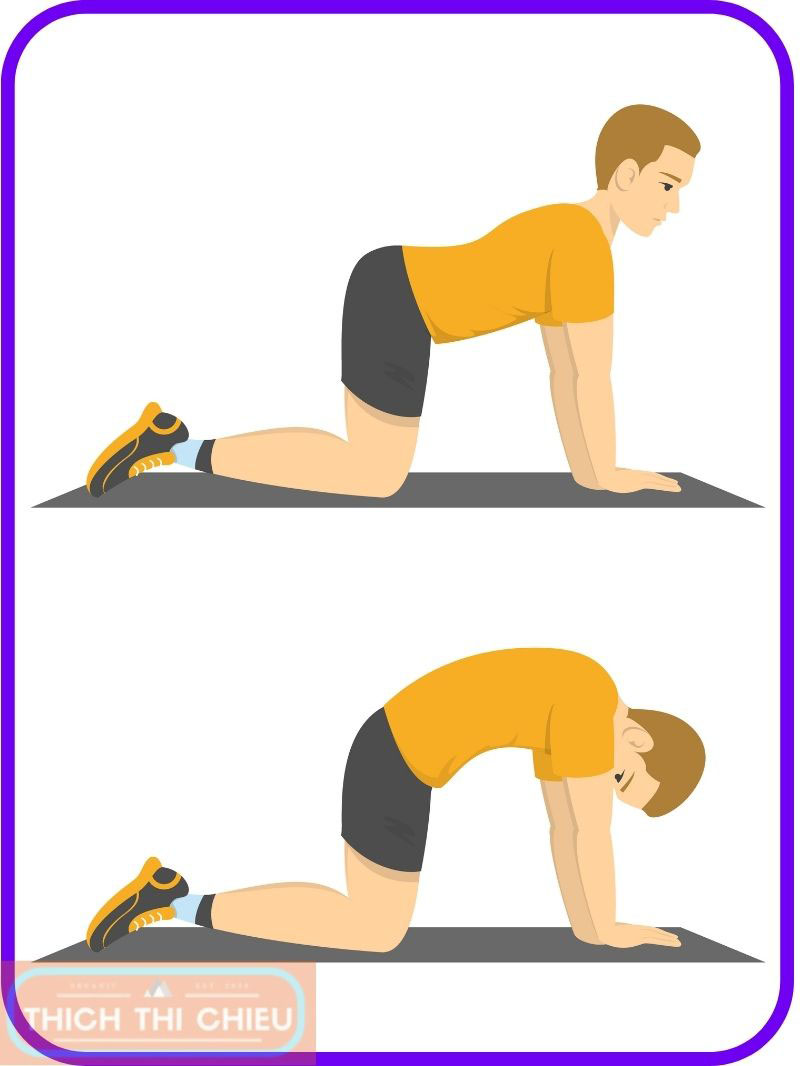Yoga is an ancient practice with a wealth of benefits for both physical and mental health. In recent years, there has been growing interest in the use of yoga to treat a variety of conditions, including ovarian cysts. Ovarian cysts are fluid-filled sacs that develop on or within the ovaries. They are a common condition, affecting up to 20% of women at some point in their lives. Most ovarian cysts are harmless and go away on their own within a few months. However, some ovarian cysts can cause pain, bleeding, and other symptoms.
In this article, we will explore the benefits of yoga for ovarian cysts and discuss some specific yoga asanas that may be helpful. We will also provide some tips for practicing yoga safely and effectively.
Yoga’s Positive Impact on Ovarian Cysts
Yoga, an ancient practice rooted in physical postures, breathing techniques, and mindfulness, offers a holistic approach to wellness that can be particularly beneficial for women with ovarian cysts. Its benefits stem from its ability to:
- Enhance Circulation: Yoga poses, particularly those involving gentle twists and stretches, promote blood flow to the pelvic region, including the ovaries. This improved circulation helps nourish the ovaries, reduce congestion, and potentially aid in cyst resolution.
- Reduce Inflammation: Yoga’s focus on deep breathing and relaxation techniques can help lower overall stress levels, which in turn can contribute to reduced inflammation. Inflammation plays a role in cyst formation and associated pain.
- Promote Relaxation: Yoga’s calming effect on the nervous system can help alleviate anxiety and stress, both of which can exacerbate the symptoms of ovarian cysts. Relaxation promotes overall well-being and can enhance the body’s ability to heal.
Beneficial Yoga Asanas for Ovarian Cysts
Butterfly Pose (Baddha Konasana)
This gentle hip-opening pose helps relax the pelvic muscles and improve circulation in the lower abdomen, potentially aiding in cyst resolution.
Instructions:
- Sit on the floor with your legs extended in front of you.
- Bend your knees and bring the soles of your feet together, letting your knees fall open to the sides.
- Gently press your knees down towards the floor, using your hands to guide your inner thighs towards your body.
- Relax your shoulders and breathe deeply into your abdomen.
- Hold for 5-10 breaths.
Reclining Bound Angle Pose (Supta Baddha Konasana)
A similar pose to Butterfly Pose, but performed lying down, this asana provides deeper relaxation and is particularly helpful for women experiencing pain from ovarian cysts.
Instructions:
- Lie on your back with your legs extended in front of you.
- Bend your knees and bring the soles of your feet together, letting your knees fall open to the sides.
- Gently press your knees down towards the floor, using your hands to guide your inner thighs towards your body.
- Place your arms alongside your body, palms facing down.
- Relax your shoulders and breathe deeply into your abdomen.
- Hold for 5-10 breaths.
Cat-Cow Pose (Marjaryasana-Urdhva and Ado)
This dynamic pose enhances spinal flexibility and improves circulation in the abdomen and spine, potentially aiding in cyst drainage.
Instructions:
- Start on your hands and knees with your hands directly under your shoulders and your knees hip-width apart.
- As you inhale, arch your back, lifting your head and tailbone, creating a U-shape with your spine.
- As you exhale, round your back, tucking your chin to your chest and drawing your navel towards your spine, creating a C-shape with your spine.
- Continue this flow, coordinating your breath with the movement of your spine.
- Repeat for 5-10 breaths.
Legs Up the Wall Pose (Viparita Karani)
This pose inverts the body, allowing blood to flow back to the heart and promoting relaxation. It can help reduce stress and alleviate pelvic pain.
Instructions:
- Find a wall space and lie on your back with your side closest to the wall.
- Swing your legs up the wall, bringing your buttocks as close to the wall as possible.
- Adjust your position so that your body forms a straight line from your hips to your heels.
- Relax your arms alongside your body, palms facing up.
- Close your eyes and breathe deeply into your abdomen.
- Hold for 5-10 minutes.
Frequency of Yoga Practice for Ovarian Cysts
The recommended frequency of yoga practice for ovarian cysts is at least three times per week. However, it is important to listen to your body and adjust the frequency and intensity of your practice depending on your individual needs.
Factors Influencing Yoga Practice Frequency
Several factors can influence the frequency and intensity of your yoga practice for ovarian cysts, including:
- Severity of symptoms: If you are experiencing mild symptoms, you may be able to practice yoga more frequently and intensely. However, if you are experiencing more severe symptoms, you may need to adjust your practice accordingly.
- Overall health: Your overall health can also influence your yoga practice. If you have any other health conditions, you may need to talk to your doctor about the best way to incorporate yoga into your routine.
- Personal preferences: Ultimately, the best way to determine how often to practice yoga for ovarian cysts is to listen to your body and do what feels best for you.
Complementary Tips for Treating Ovarian Cysts
In addition to incorporating yoga into your routine, adopting a holistic approach that includes healthy lifestyle habits can further enhance your ovarian cyst management plan:
- Embrace a Nutrient-Rich Diet: A balanced diet rich in fruits, vegetables, whole grains, and lean proteins provides essential nutrients for optimal health and can aid in cyst resolution. Limit processed foods, sugary drinks, and excessive caffeine intake, as these can contribute to inflammation and hormonal imbalances.
- Prioritize Adequate Sleep: Quality sleep is crucial for overall well-being and can play a role in regulating hormones, reducing stress, and promoting healing. Aim for 7-8 hours of uninterrupted sleep each night to support your body’s natural repair processes.
- Effectively Manage Stress: Stress can exacerbate the symptoms of ovarian cysts, making them more noticeable and uncomfortable. Incorporate stress-reduction techniques such as meditation, deep breathing exercises, and gentle walks into your daily routine to promote relaxation and overall well-being.
- Consider Herbal Remedies: Certain herbs, such as chasteberry and evening primrose, have shown potential benefits in managing ovarian cysts and associated symptoms. Consult with a qualified herbalist or healthcare provider to determine if these remedies are appropriate for you.
- Maintain Regular Physical Activity: Regular physical activity, apart from yoga, can help regulate hormones, improve circulation, and promote overall well-being. Engage in moderate-intensity exercises like brisk walking, swimming, or cycling most days of the week.
- Schedule Regular Medical Checkups: Regular visits to your healthcare provider are essential for monitoring your ovarian cyst status and discussing any concerns or changes in symptoms. Early diagnosis and timely interventions can help prevent complications and improve overall health outcomes.
Yoga can help to reduce the symptoms of ovarian cysts by improving circulation, reducing inflammation, and promoting relaxation. It can also help to improve overall health and well-being. Hopefully, the above article of TTC has provided you with useful information. If you have any questions or concerns, please leave a comment below.










Leave a Reply